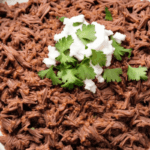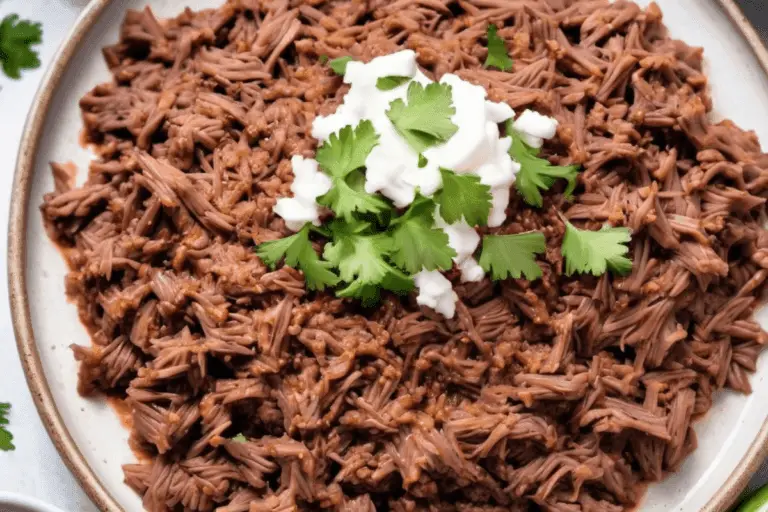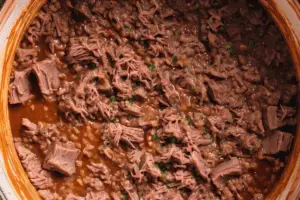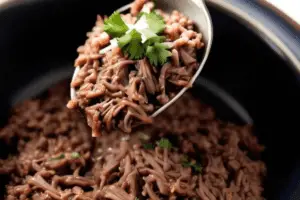Barbaco is a celebrated culinary tradition rooted in history and creativity. From its ancient origins to its modern iterations, this method of preparing meat has become a symbol of flavor and heritage. This article explores its essence, including traditional practices, regional adaptations, and its nutritional value, without compromising authenticity.
Through this detailed exploration, we aim to uncover what makes Barbaco a timeless culinary treasure. From its traditional preparation techniques to its presence in diverse regional cuisines, each section will highlight how Barbaco embodies flavor, history, and nutritional richness.
The History of Barbaco
Barbaco has ancient origins, tracing back to indigenous communities in the Caribbean and the Americas. The word “barbecue,” now globally recognized, is derived from the Taino word “barbacoa,” signifying a cooking method rather than a specific dish. This method involved slow-cooking meat over an open flame or underground pits to achieve tender, flavorful results.
The historical significance of Barbaco underscores its role as more than just sustenance; it is a symbol of shared heritage and culinary evolution.
Traditional Barbaco Practices
In its traditional form, Barbaco exemplifies the art of simplicity combined with patience. Indigenous communities often used large pits lined with stones and banana leaves to slow-cook meat over smoldering coals. This technique locked in the juices, creating a tender and flavorful outcome.
Key practices included:
- Preparation: Marinating the meat with a blend of spices, herbs, and citrus for hours to infuse deep flavors.
- Cooking: Using indirect heat from underground pits or suspended grills, ensuring even cooking without drying out the meat.
- Presentation: Serving the dish communally, often accompanied by fresh tortillas, salsas, and vegetables.
This traditional approach to Barbaco emphasized natural flavors while reflecting the resourcefulness of the cultures that perfected it.
Ingredients in Barbaco
The beauty of Barbaco lies in its adaptability, yet the essential ingredients remain simple and authentic. Each component contributes to the dish’s unique flavor profile.
Key ingredients include:
- Meat: Lamb, goat, beef, or pork are popular choices, depending on regional preferences.
- Marinades: A mix of aromatic spices like cumin, oregano, and chili, combined with garlic, onions, and lime juice.
- Herbs: Fresh leaves like avocado or maguey enhance the dish’s flavor and aid in wrapping the meat for slow cooking.
By blending these elements, Barbaco delivers a harmonious balance of smoky, spicy, and savory notes. Variations in ingredients often reflect local availability, making each rendition distinct.
Cooking Techniques
The cooking techniques of Barbaco stand as a testament to the ingenuity of traditional culinary practices. While the methods may vary, the principles remain rooted in slow cooking and meticulous preparation.
Classic Techniques
- Underground Pits: This method involves digging a pit, lining it with hot stones, and wrapping the meat in banana or maguey leaves before burying it for hours.
- Over-the-Fire Grills: Wooden frames or grills suspended over low flames for extended periods yield tender meat with a charred exterior.
Modern Adaptations
- Ovens: Urban settings have adapted traditional methods by using slow cookers or ovens to replicate the pit-cooking effect.
- Smokers: Infusing the meat with a smoky aroma while ensuring even cooking.
Each technique adds depth and complexity to Barbaco, demonstrating the enduring relevance of this ancient practice in contemporary kitchens.
Barbaco in Modern Cuisine
Modern chefs have embraced Barbaco as a canvas for innovation while respecting its traditional roots. This timeless dish has seamlessly transitioned into contemporary dining experiences.
Innovative Presentations
- Tacos and sliders featuring tender Barbaco meat.
- Fusion dishes blending Barbaco with international cuisines, such as Asian-inspired wraps or Mediterranean plates.
Gourmet Interpretations
- Elevated spice blends and unique marinades.
- Pairing Barbaco with fine wines and artisanal sides for upscale dining.
These modern applications of Barbaco showcase its versatility, proving that tradition and innovation can coexist harmoniously.
Regional Variations
Each region that has adopted Barbaco adds its unique flair, creating a rich tapestry of flavors and techniques.
Mexico
- Often made with lamb or goat, cooked underground with maguey leaves.
- Accompanied by consomé, a flavorful broth made from the drippings.
Caribbean
- Incorporates local spices like allspice and scotch bonnet peppers for a fiery kick.
- Commonly served with rice and beans.
United States
- BBQ-style adaptations emphasize smoky flavors and tangy sauces.
- Popular in Southern cuisine as pulled or shredded Barbaco.
Exploring regional variations highlights the adaptability and enduring appeal of this culinary tradition.
Nutritional Value of Barbaco
Beyond its incredible flavor, Barbaco offers a host of nutritional benefits, making it a wholesome choice for any meal.
Key Nutritional Benefits
- High Protein Content: Essential for muscle growth and repair.
- Rich in Vitamins and Minerals: Spices and herbs provide antioxidants and anti-inflammatory properties.
- Low in Fat (Traditional Preparations): Slow-cooking methods reduce the need for added fats.
By balancing rich flavors with nutritional value, Barbaco caters to health-conscious diners without compromising taste.
Through its rich history, diverse ingredients, and innovative techniques, Barbaco continues to captivate hearts and taste buds around the world. Whether enjoyed traditionally or with a modern twist, this dish remains a true celebration of flavor, culture, and culinary mastery.
Barbaco and Community Traditions
This traditional cooking style is more than just a method; it represents a deep connection to community and heritage. Throughout history, this practice has been a central element of gatherings and celebrations, fostering bonds among families and neighbors. In rural areas, preparing the dish was often a communal task, with roles divided for marinating, wrapping, and cooking the meat.
This dish symbolizes collaboration, as the process often involves intricate preparations that require multiple hands. The practice of cooking in pits or on open grills also reflects a respect for nature, as ingredients like maguey leaves and natural coals are integral to traditional methods. Even today, Barbaco is a centerpiece for festivities, bridging the gap between generations and preserving cultural traditions. Its enduring popularity highlights its ability to unite people through shared experiences and the love of authentic flavors.
Barbaco Recipes
Crafting Barbaco requires patience and precision, as the process brings together a medley of spices, textures, and aromas. While recipes vary by region, certain core elements remain consistent, ensuring the dish stays true to its roots.
Classic Recipe for Barbaco
- Meat: Lamb or goat is traditionally used, though beef or pork are popular alternatives.
- Marinade: A blend of garlic, oregano, cumin, cloves, and chili peppers for a robust flavor.
- Cooking Method: Slow-cooked in a pit, wrapped in maguey or banana leaves.
Modern Variations
- Slow-Cooker Method: Replicates the pit’s slow cooking with added convenience.
- Vegan Option: Substitutes jackfruit or mushrooms, paired with the traditional spice mix.
Each recipe adapts Barbaco to suit different palates, showcasing its versatility without compromising its essence.
Tools and Equipment
The tools and equipment used in making Barbaco are as vital as the ingredients themselves. They ensure the dish achieves its signature texture and flavor.
Traditional Tools
- Pit Oven: An underground cooking method lined with hot stones.
- Maguey Leaves: Used to wrap and flavor the meat, also serving as a natural steamer.
Modern Alternatives
- Slow Cooker or Dutch Oven: Recreates the slow, even cooking of traditional methods.
- Smoking Chips: Adds a smoky aroma, mimicking the effect of pit cooking.
Having the right tools can significantly impact the outcome, helping to retain the authenticity of Barbaco while accommodating modern kitchens.
Pairings and Side Dishes
The accompaniments served with Barbaco elevate its flavor and complete the dining experience. A well-chosen side dish complements the rich, smoky notes of the main dish, creating a balanced meal.
Traditional Pairings
- Fresh Tortillas: Warm, handmade tortillas are a must-have with Barbaco.
- Salsa Verde or Roja: Spicy and tangy salsas enhance the dish’s flavors.
- Beans and Rice: A staple in many cultures, offering a hearty addition.
Modern Ideas
- Quinoa Salad: A lighter, nutritious alternative to rice.
- Pickled Vegetables: Adds a zesty contrast to the savory meat.
Pairing Barbaco with the right sides allows the dish’s unique flavors to shine while catering to diverse preferences.
Barbaco as Street Food
In many regions, Barbaco has made its way to bustling streets and vibrant food markets, becoming a beloved street food. Vendors prepare the meat in large quantities, serving it hot and fresh in tacos, burritos, or on its own.
The portability of Barbaco dishes makes it a popular choice for busy diners seeking a quick yet satisfying meal. Tacos filled with tender Barbaco meat, topped with onions, cilantro, and salsa, are a crowd favorite. Its affordability and flavor-packed appeal make it a staple of street food culture, drawing locals and tourists alike. This accessibility ensures that Barbaco remains a part of everyday culinary life, showcasing its ability to adapt to modern demands while retaining its traditional charm.
Sustainability and Barbaco
Sustainability is increasingly becoming a focus in culinary practices, and Barbaco has potential to align with these values. Traditionally, Barbaco utilized every part of the animal, minimizing waste and respecting resources.
Sustainable Practices
- Locally Sourced Ingredients: Reducing the carbon footprint by using regional produce and meats.
- Eco-Friendly Cooking Methods: Embracing natural pits and avoiding excessive energy use.
- Plant-Based Variations: Providing environmentally conscious options with jackfruit or lentils.
By incorporating sustainable practices, Barbaco can maintain its rich tradition while adapting to the needs of an eco-conscious world.
FAQs
What meats are best for Barbaco?
While lamb and goat are traditional, beef and pork are excellent substitutes. Modern variations even include plant-based ingredients for a vegan-friendly option.
Can Barbaco be made without a pit?
Yes! A slow cooker, oven, or smoker can replicate the slow-cooking process, achieving similar results.
How long does Barbaco take to prepare?
Traditional methods can take 8-12 hours. However, modern techniques like slow cooking can reduce active preparation time.
Is Barbaco spicy?
The level of heat depends on the marinade and accompanying salsas, making it easily adjustable to individual preferences.
What Kind of Meat Is Barbacoa?
Barbaco is traditionally made using tough cuts of meat that benefit from slow cooking to achieve tenderness and rich flavor. Common choices include lamb, goat, or beef. The meat is marinated with spices and wrapped in maguey or banana leaves before being slow-cooked, often in an underground pit or using modern alternatives like slow cookers. The slow cooking process allows the meat to become tender and infused with the robust flavors of the marinade.
What Is Birria vs Barbacoa?
While barbaco and birria share similarities, they are distinct dishes with different origins and preparation methods:
- Barbacoa: Traditionally involves slow-cooking meat in pits or similar methods, often seasoned simply with spices and herbs for a smoky, earthy flavor. It is usually served with tortillas, salsas, and consomé.
- Birria: A Mexican dish originating from Jalisco, typically made with goat or beef, featuring a more complex, spicy, and savory marinade. Birria is slow-cooked and served with its broth (consomé), often as a soup or taco filling.
The main distinction lies in the seasoning and presentation, with birria often being spicier and broth-based, while this traditional dish highlights smoky, tender meat.
What Part of the Cow Is Barbacoa Meat?
When made from beef, this ingredient often uses cuts like the cheek (cachete) or head meat, including tongue (lengua). These cuts are rich in connective tissue and fat, making them ideal for the slow-cooking process that this ingredient requires. This method breaks down the collagen, resulting in tender, flavorful meat. Depending on the region and availability, other parts like brisket or chuck may also be used.
Conclusion
Barbaco is more than a dish; it is a celebration of tradition, flavor, and adaptability. From its roots in ancient cooking methods to its modern-day interpretations, this culinary art form continues to unite communities and tantalize taste buds. Whether enjoyed at home, in a gourmet setting, or on the streets, Barbaco undeniably embodies a timeless appeal, thereby making it a cherished part of global gastronomy. Additionally, by honoring its history while simultaneously embracing innovation, Barbaco continues to remain a culinary legacy that transcends generations.
Print
- Prep Time: 30 minutes (includes marinating preparation; marination time excluded as it varies)
- Cook Time: –12 hours (depends on method and size of the meat
- Total Time: 8 hours 30 minutes to 12 hours 30 minutes
- Yield: Serves 6–8 (depending on portion size)
- Category: Main Course
- Method: Slow Cooking (Pit, Slow Cooker, Oven, or Smoker
- Cuisine: Mexican / Latin American
- Diet: Gluten Free
Description
Barbacoa is a traditional cooking method and dish deeply rooted in the cultural and culinary history of the Americas, particularly among indigenous communities. The term originates from the Taino word “barbacoa,” referring to a process of slow-cooking meat over an open flame or in underground pits. Known for its tender texture and smoky, flavorful profile, Barbacoa is typically prepared using cuts of meat like lamb, goat, or beef, which are marinated with spices, herbs, and citrus before being slow-cooked for hours.
Ingredients
Traditional Barbacoa Ingredients
Barbacoa’s ingredients are straightforward yet rich in flavor, allowing for adaptability while retaining authenticity. Here’s a breakdown of the key components:
Meat
- Lamb: A traditional favorite, particularly in Mexican Barbacoa.
- Goat: Commonly used in rural and traditional settings.
- Beef: Cuts like cheek (cachete), brisket, or chuck are popular for their tenderness when slow-cooked.
- Pork: A less common but flavorful alternative.
- Plant-Based Alternatives (Modern Variations): Jackfruit or mushrooms for vegan Barbacoa.
Marinade
- Citrus: Lime juice or orange juice to tenderize the meat and enhance flavor.
- Spices: Cumin, oregano, cloves, and ground chili peppers (such as guajillo or ancho).
- Aromatics: Garlic, onions, and bay leaves for depth of flavor.
- Salt and Pepper: Essential for seasoning.
Wrapping Leaves
- Maguey Leaves: Traditional and highly aromatic, used to wrap the meat during cooking.
- Banana Leaves: A common alternative in regions where maguey leaves are unavailable.
Other Ingredients
- Vinegar: Sometimes included in the marinade for tanginess.
- Stock or Water: To create steam during the cooking process, keeping the meat moist.
- Optional Ingredients for Consomé: Tomatoes, onions, and additional spices for a rich broth served alongside the Barbacoa.
These simple yet flavorful ingredients are combined to create Barbacoa’s signature smoky, tender, and aromatic profile, making it a beloved dish worldwide.
Instructions
Barbacoa is a slow-cooked dish that requires time and care to achieve its signature tender texture and bold flavors. Below are detailed instructions for both traditional and modern methods.
Traditional Underground Pit Method
- Prepare the Pit:
- Dig a pit about 2–3 feet deep and line it with stones.
- Light a fire in the pit and let it burn down to hot coals.
- Lay maguey or banana leaves over the stones to create a cooking base.
- Marinate the Meat:
- Combine spices (cumin, oregano, chili powder, cloves), garlic, onions, lime juice, and salt in a bowl to make the marinade.
- Coat the meat (lamb, goat, or beef) thoroughly with the marinade.
- Let it marinate for at least 6–12 hours, or overnight, for maximum flavor.
- Wrap the Meat:
- Place the marinated meat in maguey or banana leaves and wrap it tightly.
- Secure the wrapped meat with cooking twine if needed.
- Cook in the Pit:
- Place the wrapped meat into the pit over the hot coals.
- Cover the pit with additional leaves and seal it with soil or a heavy lid to trap the heat.
- Cook for 6–12 hours, depending on the size of the meat, until it is tender and falls apart easily.
- Serve:
- Remove the meat from the pit, unwrap it, and shred it with forks.
- Serve with warm tortillas, salsa, and sides like beans or rice.
Modern Oven or Slow Cooker Method
- Marinate the Meat:
- Prepare the marinade as described above and coat the meat evenly.
- Let the meat marinate for at least 6–12 hours in the refrigerator.
- Prepare for Cooking:
- Preheat your oven to 275°F (135°C) or set your slow cooker to low.
- Line a baking dish, Dutch oven, or slow cooker with maguey or banana leaves (optional, but adds flavor).
- Cook the Meat:
- Place the marinated meat in the dish or slow cooker and add a bit of water or broth to prevent drying out.
- Cover tightly with a lid or foil and cook:
- Oven: Bake for 6–8 hours.
- Slow Cooker: Cook on low for 8–10 hours.
- Shred and Serve:
- Once cooked, remove the meat and let it rest for a few minutes.
- Shred the meat using forks and serve with tortillas, salsa, and sides.
Optional Consomé (Broth)
- Ingredients:
- Meat drippings, water or stock, tomatoes, onions, garlic, and additional spices.
- Preparation:
- Simmer the drippings with water or stock, tomatoes, onions, and spices for about 30 minutes.
- Strain and serve as a flavorful broth alongside the Barbacoa.
Tips for Success
- Low and Slow: The key to tender Barbacoa is low-temperature, slow cooking.
- Use the Right Cuts: Tough cuts of meat with connective tissue work best for Barbacoa as they break down beautifully during cooking.
- Balance Flavors: Adjust the heat and seasoning in the marinade to suit your preference.
Whether you choose the traditional pit method or a modern adaptation, these instructions ensure an authentic and delicious Barbacoa experience.
Notes
- Meat Selection:
- Tough cuts like lamb shoulder, beef cheek, brisket, or chuck are ideal for their rich flavor and tenderness after slow cooking.
- For a leaner option, trim excess fat, but remember that some fat helps retain moisture and flavor during cooking.
- Marination:
- For the best flavor, marinate the meat for at least 6–12 hours or overnight. This allows the spices and citrus to penetrate deeply.
- Massage the marinade into the meat to ensure even coating.
- Cooking Method:
- Traditional pit cooking imparts an unmatched smoky flavor but requires significant preparation.
- For convenience, use a slow cooker, Dutch oven, or smoker, which can replicate the tender texture without a pit.
- Wrapping Material:
- If maguey or banana leaves are unavailable, foil or parchment paper can be used as a substitute. However, leaves impart a unique, earthy aroma that enhances the dish.
- Adjusting Spice Levels:
- Tailor the heat by varying the type and quantity of chili peppers. Mild peppers like ancho or guajillo offer warmth without overwhelming spiciness, while chipotle or scotch bonnet can bring more heat.
- Serving Suggestions:
- Traditional sides like fresh tortillas, salsa, and beans enhance the dish’s flavors.
- For modern twists, pair Barbacoa with quinoa, pickled vegetables, or a light salad.
- Broth or Consomé:
- Save the meat drippings and juices for making a flavorful consomé, a traditional accompaniment that adds depth to the dish.
- Leftovers:
- Barbacoa leftovers can be repurposed into tacos, enchiladas, burritos, or sliders.
- Freeze portions for later use; they reheat beautifully.
- Time and Patience:
- Barbacoa’s essence lies in slow cooking. Don’t rush the process; it’s worth the wait for tender, flavorful meat.
- Sustainability:
- Use locally sourced, organic ingredients whenever possible to honor Barbacoa’s roots in resourceful cooking.
- For eco-conscious alternatives, try a plant-based version with jackfruit or mushrooms.
These notes will help ensure a successful Barbacoa-making experience while allowing you to personalize the dish to your taste and circumstances.
Nutrition
- Serving Size: 1/8 of the recipe (approximately 4–6 ounces of meat, depending on preparation):
- Calories: 250–350 kcal
- Sugar: 1–2 g (from marinade or salsas, if included)
- Sodium: 400–600 mg (varies based on seasoning and marinade)
- Fat: 15–20 g
- Saturated Fat: 5–7 g
- Unsaturated Fat: 8–12 g
- Trans Fat: 0 g
- Carbohydrates: 3–6 g (from marinade, wrapping leaves, or additional sides)
- Fiber: 1 g
- Protein: 25–30 g
- Cholesterol: 80–100 mg



